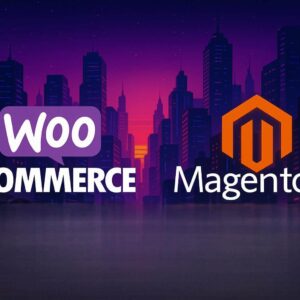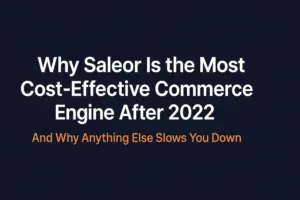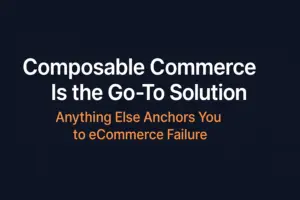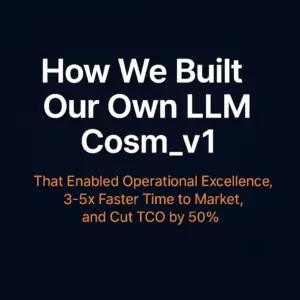Why WooCommerce Can’t Keep Up with Your Business (And How Magento Handles It Effortlessly at the Same Cost)
Introduction
Running an eCommerce business isn’t just about putting products online and waiting for orders. It’s about speed, flexibility, reliability, and having a system that can grow with you. Yet, many businesses that started with WooCommerce find themselves hitting an invisible ceiling. As sales grow and complexity increases, WooCommerce starts to creak under the weight of your ambitions.
In this article, we’ll break down why WooCommerce often becomes a bottleneck—and how Magento, at a comparable price point, delivers the performance, scalability, and peace of mind your business really needs.

Gregory Rutecki
CEO/CTO
The Hidden Cost of “Free”: Why WooCommerce Isn’t Really Cheap
WooCommerce markets itself as “free.” But if you’ve ever run a serious WooCommerce store, you know the reality: plugin chaos, security patches, server slowdowns, and spiraling maintenance costs. As your business scales, each of these issues compounds, draining your time and resources.
- Performance penalties: WooCommerce loads everything—plugins, theme scripts, unnecessary database calls—whether you need it or not. Result? Sluggish performance that bleeds conversions.
- Support nightmares: Who do you call when your checkout fails after a plugin update? Each plugin author points the finger elsewhere. You’re left firefighting while orders slip through the cracks.
- Scaling? Good luck: WooCommerce is essentially a blog engine retrofitted into an eCommerce platform. It’s not built for large catalogs, multi-store setups, or B2B pricing logic.
Image: A tangled mess of WooCommerce plugin icons symbolizing technical debt
These costs aren’t just technical—they’re emotional. Your team burns out. Your agency wastes hours chasing compatibility bugs. Your customers feel the lag and drop off.
Magento: Enterprise-Grade Power Without the Enterprise Price Tag
Magento is built from the ground up for serious commerce. It’s used by global retailers, B2B distributors, and ambitious D2C brands because it handles complexity like a breeze.
Here’s what Magento gives you out of the box (that WooCommerce only dreams of):
- Scalability without hacks: Multi-store, multi-currency, multi-language? Magento does it natively.
- Robust catalog management: Complex product types, tiered pricing, inventory rules? Done.
- API-first architecture: Ready for headless, mobile apps, and ERP integrations.
- User roles and permissions: Granular control over who can do what—essential for growing teams.
- Security and compliance: Magento powers Fortune 500s. It takes data integrity seriously.
And yes—Magento Open Source is free. Just like WooCommerce. But the difference is, you don’t need to duct tape 30 plugins together to get core features.
Magento vs WooCommerce: Real-World Business Scenarios
Let’s look at how each platform holds up in practical scenarios:
1. Scaling Product Catalogs
- WooCommerce: Starts slowing down beyond 500-1000 products. Filtering and variations become painful.
- Magento: Handles 10,000+ products with advanced filtering, layered navigation, and attribute sets.
2. International Expansion
- WooCommerce: You’ll need separate plugins for multilingual support, currency conversion, tax calculation.
- Magento: Built-in multi-store architecture with separate domains, currencies, and checkout flows.
3. B2B Commerce
- WooCommerce: Not built for wholesale pricing, custom catalogs, or credit limits.
- Magento: Includes B2B modules for customer-specific pricing, company accounts, purchase orders.
Image: Magento dashboard showing multiple store views and advanced analytics
4. Performance at Scale
- WooCommerce: Needs heavy server optimization, aggressive caching, and still feels slow.
- Magento: Requires a strong server too, but its architecture handles high traffic natively. Magento 2 is built for performance.
5. Peace of Mind
- WooCommerce: Frequent breakages from plugin updates, conflicts, or WordPress core changes.
- Magento: Stable core, strict update protocols, fewer third-party dependencies.
What our clients say
Long-Term Cost: Where Magento Wins Quietly
Business owners often focus on setup costs—but the real question is: how much does it cost to stay online, secure, and fast every month?
WooCommerce needs ongoing plugin updates, compatibility fixes, performance tuning, and security patches. Most WooCommerce sites have 20–30 plugins just to stay functional. That’s 20–30 potential failure points.
Magento, on the other hand, centralizes features in a robust core. It may require a more professional setup, but once launched, it’s a stable, maintainable platform. Your developers spend less time patching and more time innovating.
Your Reputation Is Tied to Your Tech Stack
When your checkout fails on Black Friday, your brand takes the hit. When customers wait 5 seconds for a product page to load, your bounce rate spikes. When your store can’t support mobile UX expectations, your revenue flatlines.
Every performance or reliability issue tied to WooCommerce eats away at trust. And trust is the hardest thing to rebuild.
Magento gives you a foundation that inspires confidence. It shows your partners, customers, and investors that you’re playing at a higher level.
Conclusion: Time to Graduate from WooCommerce
WooCommerce has its place—for small shops, side hustles, or content-driven sites selling a few products. But if you’re running a serious business that’s growing, diversifying, and investing in long-term digital presence, it’s time to move on.
Magento offers a serious alternative at a comparable cost, with dramatically better performance, scalability, and professional-grade features. It’s not just a better tool—it’s a better future for your business.
Image: Side-by-side comparison chart of WooCommerce vs Magento key features
Ready to scale without stress?
We help ambitious brands migrate from WooCommerce to Magento (or even Wagtail, if you’re running WordPress). Let’s talk about your goals and build a roadmap for success.
Contact us for Magento migration audit and stop worrying about your tech stack holding you back.















